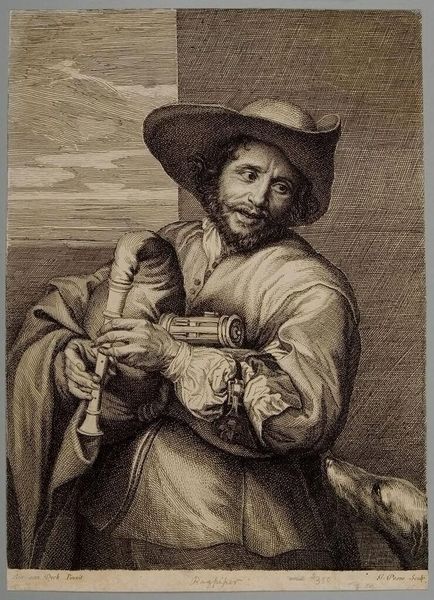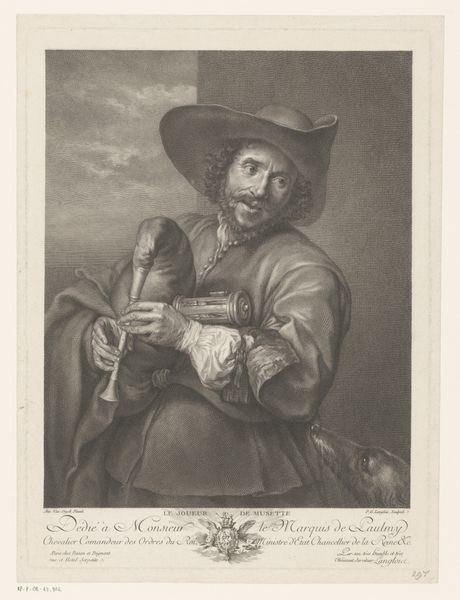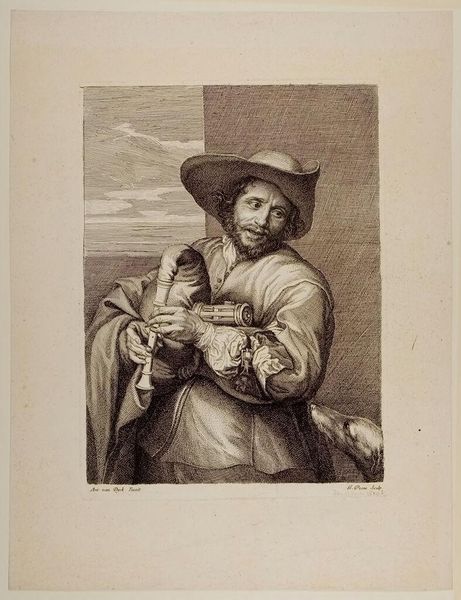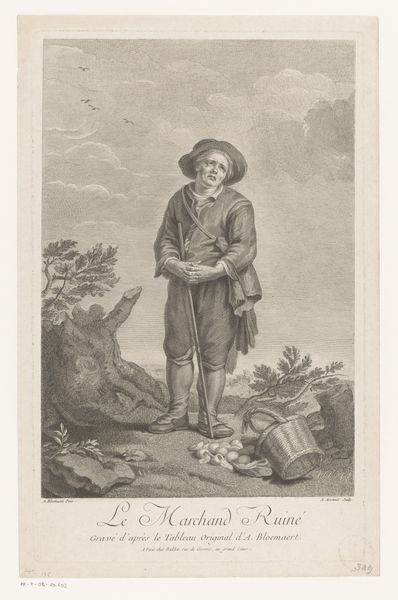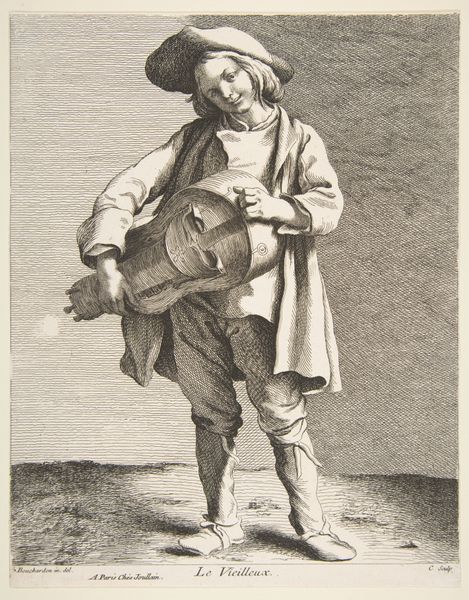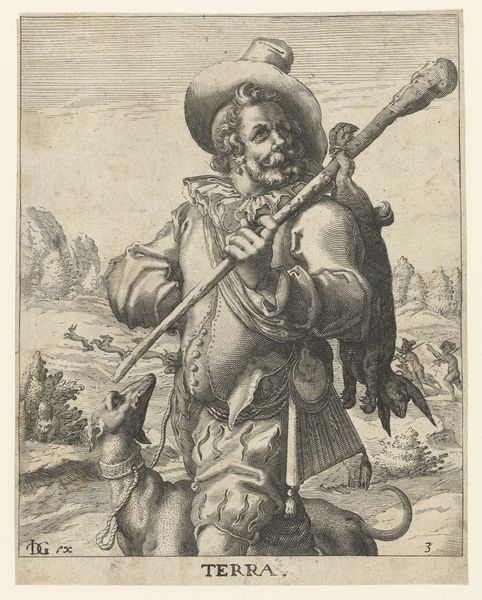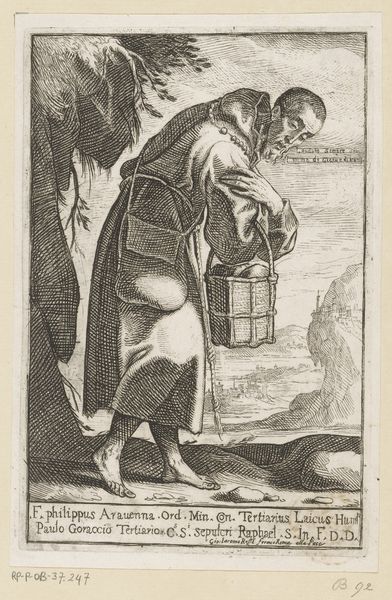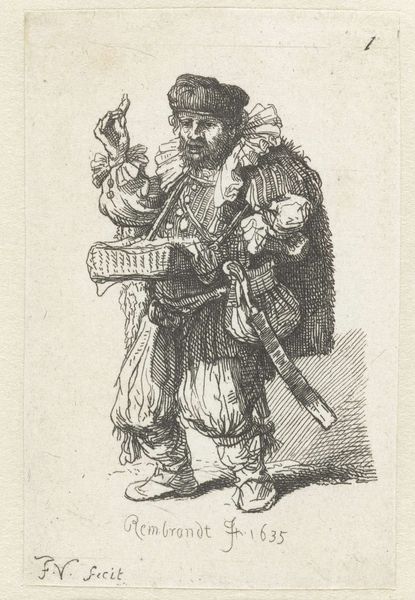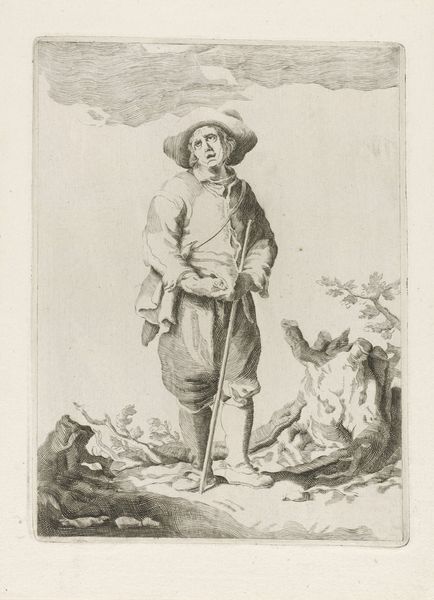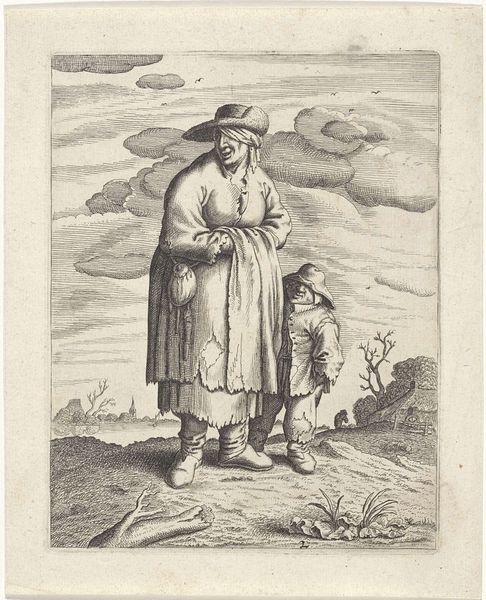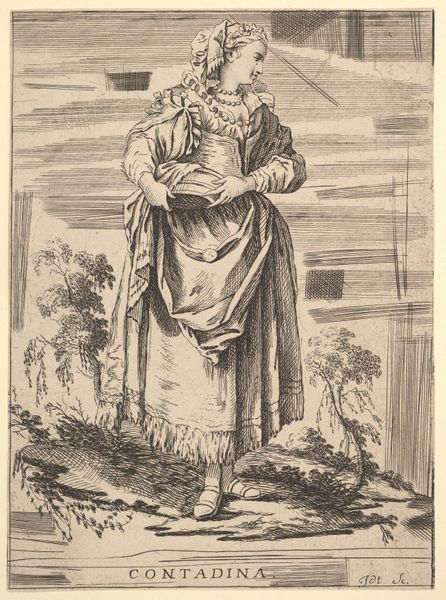
print, engraving
#
portrait
#
baroque
# print
#
portrait drawing
#
engraving
Dimensions: height 363 mm, width 265 mm
Copyright: Rijks Museum: Open Domain
Curator: This engraving, dating from sometime between 1633 and 1700, presents a portrait of François Langlois, known as de Chartres. It's currently held in the Rijksmuseum. Editor: Immediately striking is the playfulness of it! There's a joy in the subject's face as he holds this sort of proto-bagpipe and even that jaunty hat speaks to the sitter’s whimsical attitude. Curator: Precisely. Consider the artist's use of line and shadow – the fine, closely placed lines in areas such as the coat creates an almost palpable density of form in contrast to the relative openness elsewhere. There's a tangible quality. Editor: The engraving’s charm certainly contrasts with the actual realities of 17th-century French society, though. One has to ask how this individual’s life intersected with political currents, with social hierarchies... Were musical talents like his commodified, making him a courtly jester in a system that marginalized other people who might be peasants outside the city? Curator: An important point. The image flirts with idealized portrayals common in baroque portraiture of the time. Yet even while it adheres to certain formal conventions, it presents enough distinctive detail of its subject to evoke an individual with some element of social position, rather than merely some archetypical fool. Editor: Absolutely, but that assumed "social position," like the relative wealth suggested in his dress, would not have existed in isolation from widespread poverty. Was this individual supported by patronage? To ignore that material network risks aestheticizing his craft while occluding broader, intersectional realities. Curator: Your perspective helps us ground these refined techniques of representation in complex lived experiences, thereby recognizing some larger sphere than what is explicitly seen on the page itself. Editor: Right, we must interrogate, not accept the seemingly neutral or the beautiful as apolitical gestures, so that each can foster discussion beyond aesthetic boundaries.
Comments
No comments
Be the first to comment and join the conversation on the ultimate creative platform.
